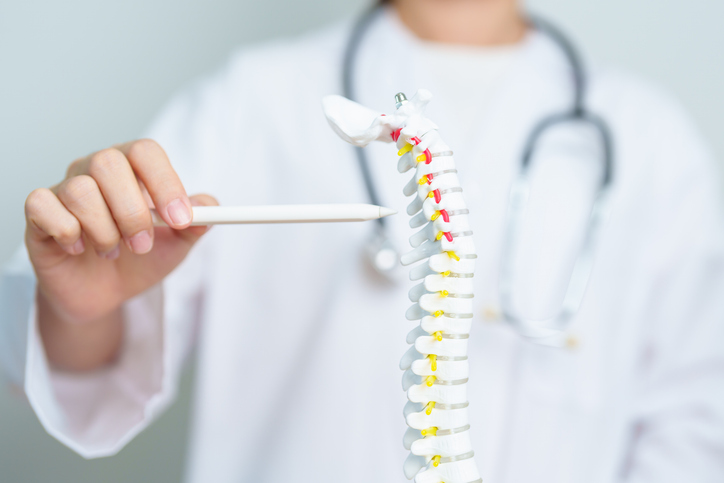Complete Vs Incomplete Spinal Injuries

Spinal cord injuries (SCI) have a dramatic effect on a person’s life. A spinal injury can affect movement, daily activities, and ultimately, independence. Spinal injuries can be either complete or incomplete, and knowing the difference is important so patients, families, and carers understand what to expect and how to plan for care. At Eximius Support, we provide care with kindness and understanding. This guide explains complete vs. incomplete spinal injuries, their causes, symptoms, treatment options, and ways to improve daily life.
Spinal Cord Injuries: Complete vs. Incomplete
The spinal cord sends messages between the brain and the body. But when it’s damaged, movement and feeling can be affected. There are two types of spinal cord injuries:
Complete Spinal Cord Injury: No movement or feeling below the injury.
Incomplete Spinal Cord Injury: Some movement or feeling remains below the injury.
Complete Spinal Cord Injuries
A complete spinal cord injury stops all signals from passing through the injury site. A complete injury means no movement or sensation in the affected areas. This type of injury is much more serious, so people with this type of injury require significant adjustments and support in daily life.
Causes of complete spinal cord injury:
Complete spinal cord injuries usually result from a traumatic accident but can also be caused by medical conditions. Some of the most common causes include:
- Car accidents, falls, or sports injuries.
- Severe pressure on the spinal cord from fractures or dislocations.
- Gunshot or stab wounds.
- Medical conditions like tumours or infections that cause total damage.
Effects and Symptoms:
The effects of a complete spinal cord injury depend on the level of the injury but typically result in total loss of function below the injury site. Common symptoms include:
- Complete paralysis (quadriplegia or paraplegia, depending on injury location).
- No sensation below the injury.
- Loss of bladder and bowel control.
- Breathing problems if the injury is high up on the spine.
- Risk of pressure sores and muscle weakness.
Treatment and Care:
Complete spinal cord injuries can’t be reversed, so treatment focuses on preventing complications and improving the quality of the patient’s life. Treatment options include:
- Emergency medical care to prevent further damage.
- Physical therapy to help with daily life.
- Wheelchairs, voice-activated technology, and other assistive devices.
- Medications to manage pain and muscle stiffness.
- Personal care and daily support from trained carers.
Incomplete Spinal Cord Injuries
People with an incomplete spinal cord injury still have some movement or feeling below the injury site. The amount of function depends on how much damage has occurred. Recovery potential is generally higher compared to complete injuries.
Types of Incomplete SCI:
There are several types of incomplete spinal cord injuries, each with unique effects on movement and sensation:
Anterior Cord Syndrome: Affects movement but keeps some sensation.
Central Cord Syndrome: Affects arm movement more than legs.
Brown-Séquard Syndrome: Causes weakness on one side and loss of sensation on the other.
Posterior Cord Syndrome: Affects coordination but keeps movement and pain sensation.
Cauda Equina Syndrome: Affects the lower spine, causing problems with bladder, bowel, and leg function.
Causes of incomplete spinal cord injury:
Incomplete spinal cord injuries can result from various medical conditions or trauma. Common causes include:
- Falls and accidents.
- Spinal cord pressure from herniated discs or arthritis.
- Infections, strokes, or tumours.
- Surgery complications or inflammation.
Effects and Symptoms:
Symptoms of an incomplete spinal cord injury vary greatly depending on the type and severity of the injury. Symptoms might include:
- Some weakness or paralysis.
- Partial loss of feeling.
- Muscle stiffness or uncontrolled movements.
- Nerve pain or discomfort.
Treatment and Care:
The good news is that recovery from an incomplete spinal cord injury is possible with proper medical care and rehabilitation. Treatment options include:
- Physical therapy to improve movement.
- Walkers, braces, and other mobility aids.
- Medication, massage, and other pain treatments.
- Electrical stimulation to help muscles work.
- Emotional support to help with mental health.
Living with a Spinal Cord Injury
Adjusting to life after an injury takes lots of time and support. Doctors and carers will develop personalised care plans to help patients maintain as much independence as possible. This is so important for overall well-being and a fulfilling and independent life.
Helpful Strategies:
There are several ways to improve quality of life after a spinal cord injury. Some of the most effective strategies include:
- Personalised Care Plans: Tailored to meet specific needs.
- Home Adjustments: Adding ramps, grab bars, and accessible furniture.
- Assistive Technology: Using wheelchairs, speech recognition software, and robotic limbs.
- Emotional Support: Talking to support groups, therapists, or loved ones.
How Eximius Support Can Help
At Eximius Support, we provide expert live-in care to help people with spinal injuries live with dignity and independence. Our carers and companions provide personalised support and care based on individual needs. We offer a wide range of services to ensure comfort and well-being, including:
If you or a loved one needs professional and compassionate care, Eximius Support is here to help. Contact us today to learn more about our live-in care services.
Further reading:
How Spinal Injuries Can Affect People and Their Families
Spinal Cord Injury And Mental Health
Supporting Our Clients With a Spinal Injury
Daily Mobility Challenges with a Spinal Injury